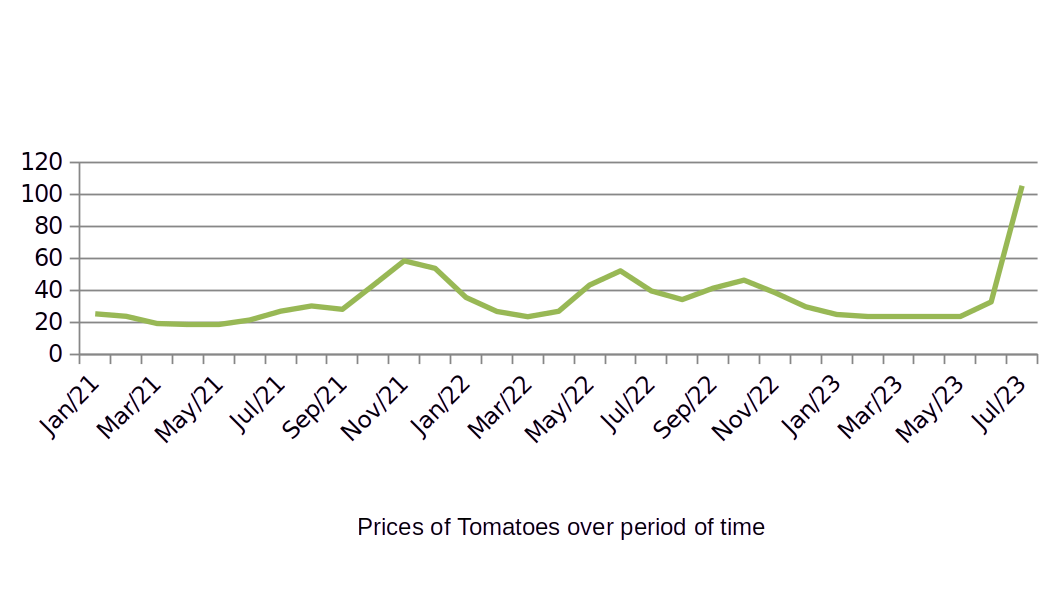Tomatoes have a quirky history that starts with their cheeky little ancestors in South America.
Fancy Spanish explorers sailed across the seas, discovering these peculiar red fruits. They brought them back home, leaving people scratching their heads, wondering what to make of them. Some even feared they were poisonous, but the clever Italians thought otherwise and started cooking up tasty tomato dishes. Fast forward to India, and tomatoes found a new home during the 16th and 17th century, thanks to trade routes with Europeans. Indians embraced the tomatoes with open arms and mixed them into their traditional cuisine.
Eventually tomatoes got settled in most parts of the world and scientists developed many varieties. Tomato became an important commercial crop by 20th century! But in 2015, even Israel, which is known for having super advanced agriculture technology and even invented cherry tomatoes, had a bit of a pickle with a shortage of tomatoes. The problem arose because the weather wasn’t favourable for growing tomatoes, and at the same time, there was a sudden increase in demand because of festivals of Muslims and Jews. So, when supply went down and demand went up, the prices of tomatoes went on a roller coaster ride!
In India, tomatoes are grown in tomato belts like Maharashtra, Karnataka, and others. These regions have the right conditions for tomato cultivation, making them fruitful lands for tomato lovers. As for prices, they’re quite the rollercoaster ride too! Prices drop in January and February but shoot up during the rainy season till and November of the year. This year, tomato farmers face challenges with diseases and unpredictable weather, leading to skyrocketed prices.

All India average prices of tomatoes in last three years, source: https://consumeraffairs.nic.in/
Can digitization moderate the jeopardised situation of tomato market?
Digitization can indeed moderate the jeopardized situation of the tomato market. When Farmer Producer Organizations (FPOs) digitize their data and integrate it with weather information, it opens up a world of opportunities for farmers to make better decisions and stabilize commodity prices.
🍅 Firstly, access to real-time information on market prices, demand trends, and supply dynamics empowers FPO members to make informed decisions about when and where to sell their produce. This reduces the likelihood of distress sales during times of low prices, helping farmers get fairer returns for their tomatoes.
🍅 Secondly, real-time weather data enables farmers to anticipate weather patterns, allowing them to plan their sowing and harvest cycles effectively. By aligning agricultural activities with weather forecasts, farmers can optimize their production strategies and protect their crops from adverse weather events, reducing losses and price volatility caused by supply disruptions.
🍅 Additionally, integrating weather data with market data and analytics improves price forecasting models. Armed with such insights, farmers can anticipate price movements and make informed marketing decisions, fetching better prices for their produce.
In conclusion, digitization empowers farmers with crucial information and resources to optimize their agricultural practices. By managing risks, enhancing productivity, and aligning marketing strategies with weather patterns, digitization can contribute to moderating tomato prices and creating a more resilient and sustainable agricultural ecosystem. So, next time you’re wondering “Who Moved My Tomatoes?”, remember their whimsical journey and how digitization can help keep tomato prices in check! 🍅😄
References:
https://indianexpress.com/article/explained/explained-economics/why-tomato-prices-high-8689168/
